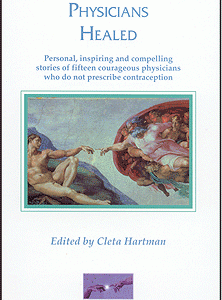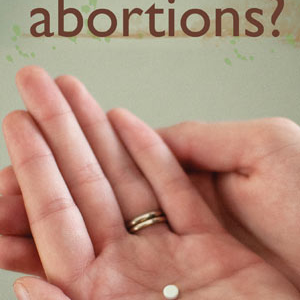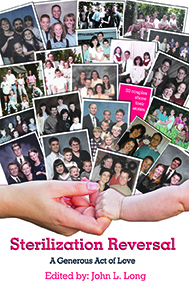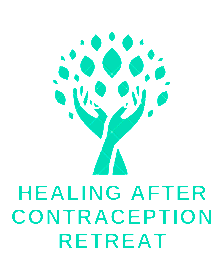October is Breast Cancer Awareness Month. This annual campaign began in 1985. Although the campaign encourages early detection with regular self-exams, doctor visits, and yearly mammograms, it does not emphasize some preventable risk factors for breast cancer.
How common is breast cancer?
Cancer is the second leading cause of death in the United States, exceeded only by heart disease. One of every five deaths in the United States is due to cancer. In the year 2022, 272,454 new cases of female breast cancer were reported, of whom 42,211 women ultimately died.1 Breast cancer is the second leading cause of cancer death in women. The chance that any woman will die from breast cancer is about 2.5% (about 1 in 40). Overall, the average risk of a woman in the United States developing breast cancer sometime in her life is about 13%. This means there is a 1 in 8 chance she will develop breast cancer. 2
What are the risk factors for breast cancer?
According to the U.S. National Cancer Institute, risk factors for breast cancer include older age, genetic abnormalities, hormone therapy, radiation therapy to the chest, alcohol, and obesity. Although hormonal contraceptive use and abortion have been shown to increase the risk of breast cancer, these risk factors are virtually ignored during the campaign.
Do we have any evidence that hormonal contraception is associated with breast cancer?
Observational studies from the National Cancer Institute have provided consistent evidence that the risk of breast cancer is increased in women who use oral contraceptives.3 Hormonal birth control contains synthetic estrogen and increases not only the risk of breast cancer but also the risk of cervical cancer and liver cancer. Synthetic estrogen was classified by the World Health Organization in 2005 as a “Group 1 carcinogen”.4 Synthetic Progestogens-only contraceptive use is increasing and it is associated with a slight increase in breast cancer risk.5 Immature breasts are more susceptible to carcinogens because immature lobules have far more estrogen and progesterone receptors present than more mature breasts. When type 1 or 2 lobules are exposed to synthetic estrogen and progestins in hormonal contraception, their cells split into two, and they run the risk of making an error in the DNA, also known as a mutation. Mutations can lead to cancer. That is why breast cancer will only start in immature lobules.
Are there any studies about breast cancer and the use of hormonal contraception?
According to a meta-analysis published in the Mayo Clinic Journal, women who have used hormonal contraceptives for four years before their first full-term pregnancy have a 52% increased risk of breast cancer.6
Another recent meta-analysis of observational studies including 22 selected studies indicated that women who used hormonal contraception had a 33% to 49% higher risk of breast cancer compared to women who did not use hormonal contraceptives 7
A study funded by the National Institutes of Health found that oral contraceptive use for a year or more was associated with a 4.2-fold increased risk of triple-negative breast cancer for women who were 40 years old and younger.8
A Danish study that included 1.8 million women who were followed on average for 10.9 years concluded that the relative risk of breast cancer among all current and recent users of hormonal contraception was 1.20. That represents an increase of 20% in the risk of suffering breast cancer. The study also found a similar increased risk of breast cancer with the use of the levonorgestrel intrauterine system.9
Does pregnancy protect against breast cancer?
The normal breast consists of structures involved in milk production called lobules. The ducts transport milk from the lobules to the nipple. The breast also has epithelial cells and stroma. During puberty, the breast forms lobules Type 1. Elevation of estrogen and progesterone during the fertility cycle stimulates the lobule type 1 to produce new alveolar buds and mature into type 2 lobules.
During the first 20 weeks of pregnancy the proliferation phase, Type 1 and Type 2 lobules increase in number. Under the influence of chorionic gonadotropin, the immature, cancer-vulnerable Type 1 and Type 2 lobules begin to mature into cancer-resistant Type 3 lobules. During labor and lactation, further growth and differentiation can be seen in the lobule type 4 along with milk secretion.
After birth and after a mother has lactated and breastfed (or should she choose not to breastfeed), Type 4 lobules regress retaining the epigenetic changes that protect against the development of cancer. This epigenetic change involves a chromatin (DNA) remodeling process that protects against cancer.
A woman’s risk of breast cancer will decrease an additional 10% with each subsequent pregnancy. After weaning, the regression to type 1 and 2 lobular structure occurs with cells with new features such as proliferative rate reduction and increased capacity to repair carcinogen-damaged DNA.10
Is breast cancer associated with abortion?
Dr. Angela Lanfranchi, the co-founder of the Breast Cancer Prevention Institute explains that that women who have never been pregnant and carried a child to term have breasts that are primarily made up of immature type 1 and 2 lobules. Induced abortion in the first trimester of pregnancy is known to disrupt the maturation of breast cells and can trigger the development of cancer cells.
In February 2022, medical researchers from the University of Western Australia, published in the Journal of Environmental Epigenetics a large study that used U.S. data from the Center for Disease Control for cancer statistics. Abortion was an independently and causally significant risk factor for breast cancer.11
Studies of Chinese populations have reported that induced abortion increases the risk of breast cancer.12,13,14
A case and control study reported an increased risk of breast cancer of 88% in women who had surgical or medical-induced abortions.15
Can breast cancer be prevented?
Some risk factors for breast cancer cannot be modified, such as age, being a woman, and genetic predisposition. Some lifestyle changes may reduce the risk of breast cancer. Regular exercise, a healthy diet, avoiding smoking tobacco, marihuana, alcohol consumption, and radiation therapy to the chest can reduce the risk of the disease.
Another important measure to decrease the risk of breast cancer is to avoid the use of powerful hormonal steroids in certain types of birth control pills and devices and to avoid hormone replacement therapy. Having children and breastfeeding offers additional protection against breast cancer.16 Natural family planning is a safe, healthy, and effective alternative.
There are alternatives to hormone replacement therapy such as bio-identical hormones and natural treatments. For unmarried women, abstinence is the only way to prevent unwanted pregnancies and abortion.
One More Soul joins this campaign to educate women and girls about the relationship between hormonal contraception, abortion, and breast cancer.
Consider ordering some of our brochures, booklets, and books for personal use or to share with your family, doctors, and friends about these preventable risk factors for a disease that is becoming an epidemic.
Breast Cancer Risk from Abortion « One More Soul
The Pill and Breast Cancer « One More Soul
Breast Cancer Risks and Prevention « One More Soul
Breast Cancer, Its Link to Abortion and the Birth Control Pill « One More Soul
- U.S. Cancer Statistics Working Group. U.S. Cancer Statistics Data Visualizations Tool. U.S. Department of Health and Human Services, Centers for Disease Control and Prevention, and National Cancer Institute; https://www.cdc.gov/cancer/dataviz, released in June 2024.
- Breast Cancer Statistics | How Common Is Breast Cancer? | American Cancer Society
- Oral Contraceptives (Birth Control Pills) and Cancer Risk – NCI
- Known and Probable Human Carcinogens | American Cancer Society
- Combined and progestagen-only hormonal contraceptives and breast cancer risk: A UK nested case-control study and meta-analysis – PubMed (nih.gov)
- Oral contraceptive use as a risk factor for premenopausal breast cancer: a meta-analysis – PubMed (nih.gov)
- Hormonal Contraception and the Risk of Breast Cancer in Women of Reproductive Age: A Meta-Analysis – PMC (nih.gov)
- .Risk factors for triple-negative breast cancer in women under the age of 45 years – PubMed (nih.gov)
- Contemporary Hormonal Contraception and the Risk of Breast Cancer | New England Journal of Medicine (nejm.org)
- bcpi-factsht-physiology2004 (bcpinstitute.org)
- Geospatiotemporal and causal inference study of cannabis and other drugs as risk factors for female breast cancer USA 2003-2017 – PubMed (nih.gov)
- A meta-analysis of the association between induced abortion and breast cancer risk among Chinese females | Cancer Causes & Control (springer.com)
- Induced Abortion, Birth Control Methods, and Breast Cancer Risk: A Case-Control Study in China – PubMed (nih.gov)
- Pregnancy, abortion, and birth control methods’ complicity with breast cancer occurrence – PubMed (nih.gov)
- Induced Abortion, Birth Control Methods, and Breast Cancer Risk: A Case-Control Study in China – PubMed (nih.gov)
- Molecular pathways involved in pregnancy-induced prevention against breast cancer – PubMed (nih.gov)








